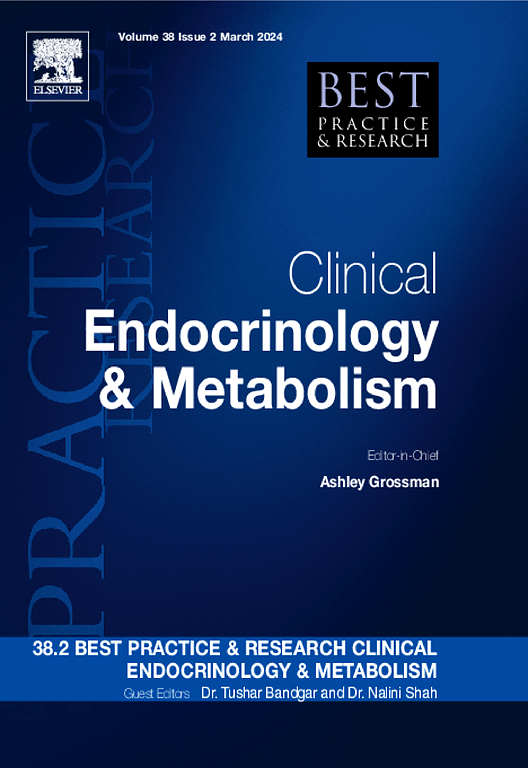血脂异常和动脉粥样硬化性心血管疾病的多基因风险评分:临床实施进展
IF 6.1
1区 医学
Q1 ENDOCRINOLOGY & METABOLISM
Best practice & research. Clinical endocrinology & metabolism
Pub Date : 2023-05-01
DOI:10.1016/j.beem.2022.101702
引用次数: 0
摘要
过去15年人类遗传关联研究的最新发现为冠状动脉疾病的常见遗传基础及其风险因素提供了新的见解,包括循环脂质/脂蛋白水平等分子特征。多基因风险评分汇集了这些大型基因研究的结果,已被开发用于预测临床疾病并在临床试验中对治疗反应进行分层。在这篇综述中,我们描述了计算多基因风险评分的常见方法,重点介绍了与冠状动脉疾病和脂质特征相关的例子,并讨论了临床实施的机遇和挑战。本文章由计算机程序翻译,如有差异,请以英文原文为准。
Polygenic risk scores for dyslipidemia and atherosclerotic cardiovascular disease: Progress toward clinical implementation
Recent discoveries from the past 15 years of human genetic association studies have provided new insights into the common genetic basis of coronary artery disease and its risk factors including molecular traits like circulating lipid/lipoprotein levels. Polygenic risk scores, which aggregate findings from these large genetic studies, have been developed to predict clinical disease and stratify treatment response in clinical trials. In this review, we describe common methods for calculating polygenic risk scores, highlight examples related to coronary artery disease and lipid traits, and discuss opportunities and challenges for clinical implementation.
求助全文
通过发布文献求助,成功后即可免费获取论文全文。
去求助
来源期刊
CiteScore
11.90
自引率
0.00%
发文量
77
审稿时长
6-12 weeks
期刊介绍:
Best Practice & Research Clinical Endocrinology & Metabolism is a serial publication that integrates the latest original research findings into evidence-based review articles. These articles aim to address key clinical issues related to diagnosis, treatment, and patient management.
Each issue adopts a problem-oriented approach, focusing on key questions and clearly outlining what is known while identifying areas for future research. Practical management strategies are described to facilitate application to individual patients. The series targets physicians in practice or training.

 求助内容:
求助内容: 应助结果提醒方式:
应助结果提醒方式:


